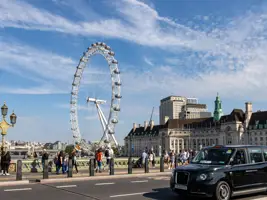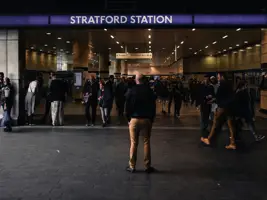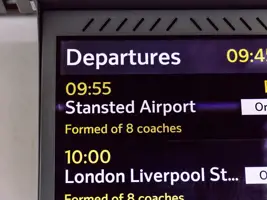The ultimate guide to the attractions of London!
Reduce the carbon footprint of your trip
4th October 2022
As we are all becoming more eco-conscious with each passing year, especially when it comes to travel, here are some tips and insights as to how you could potentially reduce the carbon footprint of your air flight.
What Is A Carbon Footprint And What Is The Carbon Footprint Of a Plane Journey?
In its simplest definition, your carbon footprint is the amount of carbon dioxide (CO2) emitted by a person, organisation, event or service. This is expressed in terms of the mass of carbon dioxide (technically carbon dioxide “equivalent”) produced: e.g. 1kg of carbon dioxide = 1kg CO2e. This can be thought of as the CO2 “cost”, “impact” or “footprint”.
Air travel has a notoriously high CO2 cost per person per hour travelled. A flight from London to Edinburgh “costs” each person on the plane 145kg CO2e – more than the average citizen of 10 countries around the world would emit in a year, and around 120kg CO2e more than the equivalent rail journey.
As such, the harsh reality is that the best way to avoid CO2 output while travelling is to not travel by air at all. This, however, is obviously not an option for most people – especially when factoring in time constraints, costs and the fact we live on an island!
As such there are some small steps that can be taken to at least try and reduce this number somewhat.
Carbon Offset Your Flight
Carbon offsetting is a way of matching your CO2 output “cost” for an action by subsequently removing or capturing that amount of CO2 from the atmosphere through various CO2 reduction methodologies (such as planting trees or investing in renewable energy). The way this works in practice is that an individual or company pays a certain amount of money to another company to complete these activities on their behalf - to a set cost per tonne of CO2 saved (sometimes shown as the calculation £/tCO2e.
Of course, the first thing to do is try to reduce your own emissions as much as you can before offsetting - and check each airline’s methodology carefully at the Quality Assurance Standard Website. There are also third-party companies that you can simply pay to offset your CO2 output, after you have made your flight and can work out how much carbon you have “spent”. Many also offer the option of being “carbon negative”, that is where you offset more carbon than what you “spent” on your flight. Again there are many registered providers of these services on the QAS website.
The downside of carbon offsetting is that it will cost you more financially (an economy flight from London Heathrow to Los Angeles, for example, will cost around £50 to offset), and that there is debate over whether or not offsetting actually is a viable way of combatting climate change.
Pack Light
A heavier plane = more fuel being used and this means more carbon is produced. By packing light, perhaps only using hand luggage allowance, you can save yourself a heap of time at the other end by not waiting for the carousel and also reduce your personal impact on the fuel the plane had to use to get you there.
Fly Direct
This seems obvious but, while multiple flights and transfers can be easy on the wallet, they will severely impact your personal carbon output as you are travelling further by plane.
Take The Train To And From The Airport
Taking a train (or a light rail system such as a metro or a tram) to and from the airport will reduce your overall journey CO2 impact by a big chunk. A train emits around two-thirds less kg CO2e than a car per person.
Almost all of the UK’s major and busiest commercial airports have railway or light rail links, as do most airports of destinations around the world.
Not only that, travelling to and from the airport via rail can also be cheaper and easier than you might think.
Go On An Adventure!
The further you travel by air, the higher your CO2 output. While a potential solution to help with this is to simply travel closer to home, there’s also an option to fly closer to home – but then take the rest of the journey by train. This can be a fun way to explore the area you are going to visit, while also cutting the carbon cost to you.




